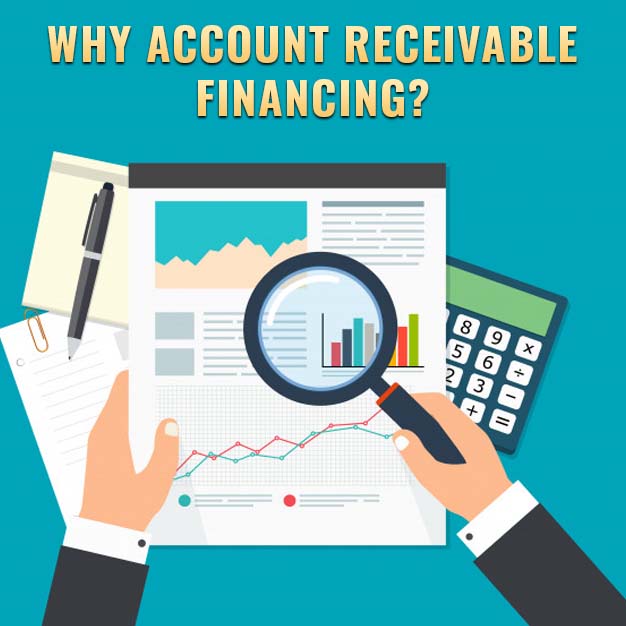What is Accounts Receivable Financing
Usually known as factoring, accounts receivable (AR) financing permits companies to get early payment on their outstanding invoices. A company utilizing accounts receivable financing commits a few, or all, of its outstanding invoices to a funder for early payment, in exchange for a fee.
The process is a fast and effective approach for a company to obtain working capital. Factoring is the best choice since securing a bank loan is almost impossible to do.
The company can get up to 90% of the invoice amount advanced to them. Receivable financing is a great way for the unbankable to acquire business funding fast.
How do Accounts Receivable Financing Work

In basic terms, it is a procedure that involves the selling of receivables or outstanding invoices at a markdown to a specialized factoring or finance company, normally referred to as “the Factor”.
The factoring company undertakes the risks on the receivable and consequently issues your business with a quick influx of money. The amount value given on the receivable greatly depends upon the “age” and quality of the receivable.
The factoring company examines the credit of the companies’ client, not their credit. Accounts receivable financing is an extraordinary alternative for companies working with strong, creditworthy clients.
Businesses that have IRS issues, client concentration, startups, minority-owned businesses, and other challenging funding situations take enormous advantage from accounts receivable financing.
These companies must make $25,000 or more every month in revenue to be approved of accounts receivable financing, despite the fact that the company could be making less. Be that as it may, if the accounts receivable funding package gets into a situation where they will make $25,000 or more, that will also qualify them.
Uncollected invoices have been bought and sold for some time in the history of business funding. It is more viable now, more so than ever, and is an amazing choice for some companies in a wide range of industries. These industries may incorporate staffing, oil and gas, medical, and more.
Selling unpaid invoices is a way for a company to get quick cash without utilizing its assets as collateral, unlike filing for a loan. Traditional loans put a company’s assets in danger if the company will be unable to repay it.
After selling the invoices to the factor, the factoring company handles the entirety of the collection duties with a soft touch. It’s critical that all parties involved maintain good ongoing relationships with one another.
A factoring company must not be a forceful ‘collection agency’, but must instead be a valued business partner.
A business may utilize accounts receivable financing to procure the necessary inventory, equipment, raw material, cover operational expenses, or meet payroll. Companies can use the capital to develop and expand the company in various ways.
The working capital may incorporate funding for additional product lines, or pay for bigger advertising campaigns.
Types of Accounts Receivable Financing
Asset-based lending (ABL)
Also referred to as a business line of credit or traditional commercial lending, asset-based lending is an on-balance sheet technique and is ordinarily accompanied by significant fees. Companies commit the majority of their receivables to the program and have restricted flexibility about which receivables are committed.
Traditional Factoring
In factoring, which is not the same as reverse factoring, a business sells its accounts receivable to a funder. However, the initial payment is for less than the full amount of the receivable.
For instance, a company may get early payment for 80% of the invoice amount subtracting processing fees.
In contrast with asset-based lending, companies have more flexibility in picking which receivables to trade. However, funder fees can be high and credit lines might be lesser.
As with asset-based lending, any factored receivables are recorded on the company’s balance sheet as outstanding debt.
Selective Receivables Finance
Selective accounts receivables finance allows companies to choose which receivables to advance for early payment. Additionally, selective receivables finance empowers companies to secure advanced payment for the full amount of each receivable.
Financing rates are usually lower than other options, and this method may not be recognized as debt based on the program structure. Since selective receivables finance remains off the balance sheet, it doesn’t affect debt ratios or other outstanding lines of credit.
Why Apply for Accounts Receivable Financing

A research done by Fundbox discovered that if all the invoices were paid on time, small businesses in the U.S. could hire an additional 2.1 million incremental employees and reduce unemployment in the country by 27%.
Unfortunately, it is often hard for small businesses to get traditional bank loans, which require collaterals, a strong credit score and a capital need of more than $100,000. Moreover, these long-term business loans may not be an option for each business type.
Accounts Receivable Financing is a feasible and convenient alternative option that is most appropriate small business owners and entrepreneurs who:
- Experience a short-term cash flow gap of 30 – 90 days
- In need of cash reserves for a business opportunity or seasonal demands
- Are expanding business rapidly
- Require help to pay regular business expenses
- Want to make improvements to their businesses
Benefits of accounts receivable financing include:
- Quick approvals and funding
- No need for collaterals
- Minimal paperwork and easy application process
- No long-term contracts to sign
- Helps with supplying smoother cash flow and eases financial planning
- Flexibility to choose the timing and amount of financing
How to Apply for Accounts Receivable Financing

All things considered, ensuring accounts receivable financing should be easier if your company has good financial statements, good reporting systems, commonly sold inventory, and, finally, customers who have a track record of paying their bills.
To secure accounts receivable financing, bring financial information that is detailed and accurate. The idea is to make the lender comfortable with a believable case for long-term viability, as well as professionally-prepared financial statements that show that you manage the business well.
Examples of requirements include:
- Commercial application
- Information on how much is needed to finance, and what the desired repayment terms are
- Description of products sold by borrower
- A list of current lien holders
- Receivables and payables aging and concentration, for current 30, 60, 90+ days
- Interim financial statement
- Corporate financial statement or corporate tax Returns, for the last 3 years
- Personal financial statement(s) of principal(s)
- Personal tax returns for the last 3 years